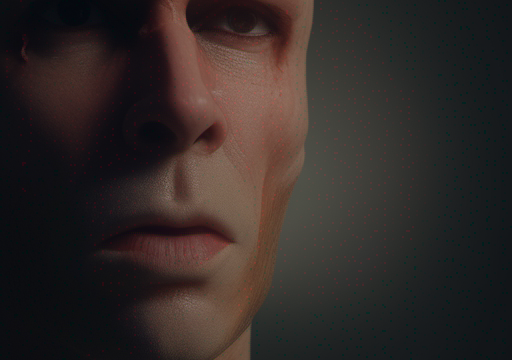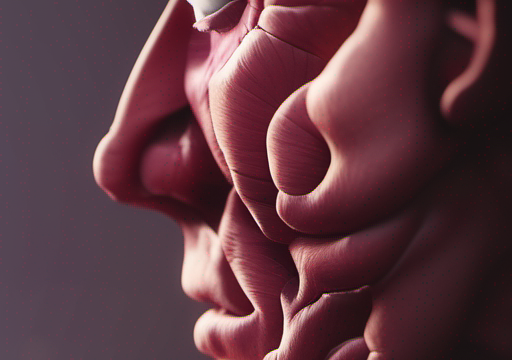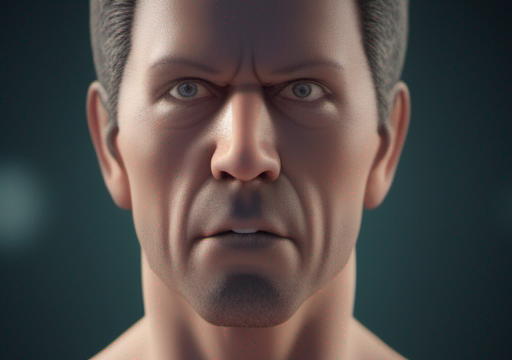🚨 Seriousness of symptom: serious
Facial muscle paresis, also known as facial weakness or paralysis, refers to a condition where one experiences difficulty or weakness in moving the muscles of the face. 🤕 This can result in a range of symptoms, including drooping or weakness of the eyelids, difficulty smiling or making facial expressions, and even difficulty speaking or articulating words. 🗣️
The symptoms of facial muscle paresis can vary in severity and may affect one side of the face or both. 🤔 In some cases, the condition may be temporary and resolve on its own, while in other cases, it may be a sign of a more serious underlying condition that requires medical attention. 🏥
If you’re experiencing any of these symptoms, don’t worry! 🙅♂️ Facial muscle paresis can be treated with physical therapy, medication, or even surgery, depending on the underlying cause. 💊 So, if you suspect you or someone you know may be experiencing facial muscle paresis, don’t hesitate to seek medical advice! 🤝
In conclusion, facial muscle paresis can be a frustrating and disruptive condition, but with proper medical attention, it can be effectively managed and treated. 💪 So, stay aware of the signs and symptoms, and don’t hesitate to seek help if you need it! 🤝

Possible Causes – Facial muscle paresis
When it comes to facial muscle paresis, there are several possible causes that could be contributing to this symptom. Here are some of the most common causes:
💡 Brain Stroke or Injury: A stroke or injury to the brain can cause facial muscle paresis, as it can disrupt the nerve signals responsible for controlling facial movements.
💊 Medications: Certain medications, such as anticholinergics, can cause facial muscle paresis as a side effect.
💔 Neurodegenerative Diseases: Conditions such as Parkinson’s disease, multiple sclerosis, and amyotrophic lateral sclerosis (ALS) can cause facial muscle paresis due to nerve damage or degeneration.
💔 Traumatic Brain Injury: A head injury can cause facial muscle paresis by damaging the nerves responsible for controlling facial movements.
🤝 Inflammatory Diseases: Conditions such as myasthenia gravis, which is an autoimmune disorder, can cause facial muscle paresis due to muscle weakness.
💔 Spinal Cord Injury: An injury to the spinal cord can cause facial muscle paresis by disrupting the nerve signals responsible for controlling facial movements.
💔 Infections: Certain infections, such as meningitis or encephalitis, can cause facial muscle paresis by damaging the nerves responsible for controlling facial movements.
🤝 Tumors: Benign or malignant tumors in the brain or spinal cord can cause facial muscle paresis by pressing on the nerves responsible for controlling facial movements.
💔 Neurotransmitter Imbalance: An imbalance of neurotransmitters, such as dopamine or acetylcholine, can cause facial muscle paresis.
💔 Hormonal Imbalance: Hormonal changes, such as those that occur during pregnancy or menopause, can cause facial muscle paresis.
🤝 Nutritional Deficiencies: Deficiencies in certain nutrients, such as vitamin B12 or thiamine, can cause facial muscle paresis.
💔 Other Causes: Other possible causes of facial muscle paresis include autoimmune disorders, such as lupus or rheumatoid arthritis, and certain genetic conditions.
It’s important to note that facial muscle paresis can be a symptom of a serious underlying condition, so if you are experiencing this symptom, it’s important to seek medical attention to determine the cause and receive proper treatment.

Diagnosis – Facial muscle paresis
🤔 Diagnosing facial muscle paresis can be a complex process, but there are several steps that healthcare professionals can follow to help identify the underlying cause.
💡 First, a thorough medical history and physical examination are essential to assess the patient’s symptoms and identify any signs of facial muscle weakness or paresis.
🔍 During the physical examination, the healthcare professional will typically check the patient’s facial movements, including the ability to smile, frown, or pucker their lips. They may also assess the patient’s ability to move their eyes, eyelids, and tongue.
🔎 Additional tests may be ordered to help confirm the diagnosis, such as a magnetic resonance imaging (MRI) or electromyography (EMG) test. These tests can help identify any damage to the facial nerves or muscles that may be causing the paresis.
💡 If the patient is experiencing difficulty speaking or swallowing, a speech therapist may also be consulted to assess their communication skills and provide appropriate treatment.
💻 At Yesil Health AI, we understand that diagnosing facial muscle paresis can be a challenging task. That’s why we’ve developed a tool that can help assess symptoms and provide personalized recommendations for treatment. 💻
💡 By using our tool, patients can quickly and easily assess their symptoms and receive guidance on how to manage their condition. This can help reduce the uncertainty and stress that often accompanies a facial muscle paresis diagnosis.
💡 So, if you’re experiencing symptoms of facial muscle paresis, don’t hesitate to seek medical attention. With the right diagnosis and treatment, it is possible to manage the condition and improve your quality of life. 💡
Remember, early diagnosis and treatment are key to managing facial muscle paresis effectively. Don’t wait – take control of your health today! 💪

Treatment – Facial muscle paresis
Facial muscle paresis, or weakness or paralysis of the facial muscles, can be a challenging condition to manage. However, there are several treatment options available that can help reduce the symptoms and improve quality of life.
💡 One of the most common treatment options for facial muscle paresis is physical therapy. A trained physical therapist can help the individual perform exercises that target the affected facial muscles, improving strength and range of motion.
🌿 Herbal remedies such as ginkgo biloba and ginseng have been suggested to improve facial nerve function and reduce paresis. However, it’s essential to consult with a healthcare professional before using any herbal remedies.
💻 Botulinum toxin injections have also been found to be effective in reducing facial muscle paresis. The injections can help weaken the overactive muscles and improve facial symmetry.
🎨 Another innovative approach to treating facial muscle paresis is through art therapy. Art therapy can help individuals express their emotions and feelings through creative activities, which can help reduce stress and anxiety associated with the condition.
🔥 Heat therapy, such as warm compresses or baths, can also be used to reduce muscle spasms and improve blood flow to the affected area.
💆♀️ Massage therapy can also be beneficial in reducing facial muscle paresis. A trained massage therapist can use various techniques to improve blood flow and reduce muscle tension in the face.
🎬 Lastly, surgery may be considered in severe cases of facial muscle paresis where other treatments have been ineffective. The goal of surgery is to relieve pressure on the facial nerve and improve function.
In conclusion, there are several treatment options available for facial muscle paresis. It’s essential to consult with a healthcare professional to determine the best course of treatment for the individual’s specific condition. With the right treatment, individuals can experience improved quality of life and reduced symptoms of facial muscle paresis.

FAQ
🤔 Question 1: What is facial muscle paresis?
💬 Answer 1: Facial muscle paresis is a condition where the muscles in the face are weakened or paralyzed, leading to difficulty with facial expressions and movements.
🤔 Question 2: How common is facial muscle paresis?
💬 Answer 2: Facial muscle paresis can occur in anyone, but it is more common in certain populations such as older adults, people with neurological disorders, or those who have suffered a head or facial injury.
🤔 Question 3: What are the symptoms of facial muscle paresis?
💬 Answer 3: Symptoms of facial muscle paresis can include weakness or paralysis of the facial muscles, difficulty smiling, frowning, or making other facial expressions, and changes in the shape of the face.
🤔 Question 4: Can facial muscle paresis be caused by a stroke?
💬 Answer 4: Yes, facial muscle paresis can be a result of a stroke, particularly if the stroke affects the brain areas responsible for controlling facial movements.
🤔 Question 5: How is facial muscle paresis diagnosed?
💬 Answer 5: Facial muscle paresis can be diagnosed through a physical examination of the face and neck, as well as imaging tests such as CT or MRI scans.
🤔 Question 6: Can facial muscle paresis be treated?
💬 Answer 6: Yes, there are several treatment options for facial muscle paresis, including physical therapy, botulinum toxin injections, and surgery. The most appropriate treatment will depend on the underlying cause of the condition.
🤔 Question 7: How long does it take to recover from facial muscle paresis?
💬 Answer 7: The recovery time for facial muscle paresis can vary depending on the underlying cause and the severity of the condition. In some cases, recovery may occur within a few weeks, while in other cases, it may take several months or longer.
🤔 Question 8: Can facial muscle paresis affect my quality of life?
💬 Answer 8: Yes, facial muscle paresis can have a significant impact on a person’s quality of life, affecting their ability to communicate, eat, and interact with others.
🤔 Question 9: Are there any lifestyle changes I can make to help manage facial muscle paresis?
💬 Answer 9: Yes, there are several lifestyle changes that can help manage facial muscle paresis, including maintaining a healthy diet, getting regular exercise, and practicing stress-reducing activities such as meditation or yoga.
🤔 Question 10: Can facial muscle paresis be prevented?
💬 Answer 10: While some cases of facial muscle paresis cannot be prevented, there are steps that can be taken to reduce the risk of developing the condition, such as maintaining a healthy lifestyle, avoiding head or facial injuries, and seeking medical attention if symptoms persist or worsen over time.
Summary
Facial muscle weakness is a common symptom of several conditions, including myasthenia gravis, Parkinson’s disease, and Bell’s palsy. 😕 When assessing facial muscle weakness, it’s essential to evaluate the affected muscles and their ability to move. 🔍
One of the primary signs of facial muscle weakness is drooping or weakness of the eyelid, which can affect the ability to close the eye properly. 👀 This can lead to difficulty reading or performing other daily tasks that require visual focus. 📝
Other symptoms of facial muscle weakness include weakness of the smile, which can make it difficult to express emotions or communicate effectively. 😊 Additionally, weakness of the facial muscles can lead to difficulty swallowing or breathing, which can be a serious concern. 🤕
It’s important to note that facial muscle weakness can be caused by a variety of factors, including neurological disorders, infections, and injuries. 🤔 Therefore, it’s crucial to conduct a thorough evaluation to determine the underlying cause of the weakness. 🔬
In some cases, facial muscle weakness can be treated with physical therapy or other interventions aimed at strengthening the affected muscles. 🏋️♀️ However, in more severe cases, surgery or other medical interventions may be necessary. 💊
In conclusion, facial muscle weakness is a common symptom that can have a significant impact on an individual’s quality of life. 💔 Therefore, it’s important to evaluate and treat the underlying cause of the weakness to improve function and overall well-being. 🤝
>
https://www.amboss.com/us/knowledge/facial-nerve-palsy
https://www.ncbi.nlm.nih.gov/books/NBK549815/
https://www.mayoclinic.org/diseases-conditions/hemifacial-spasm/symptoms-causes/syc-20373296




